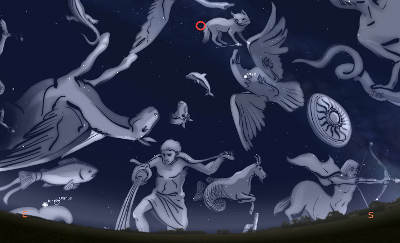Communications of the ACM
Citizen Scientists Discover Rotating Pulsar

The Arecibo Observatory in Puerto Rico is the world's largest and most sensitive radio telescope. Searches of Arecibo data use about one-third of Einstein@Home's computing capacity.
Credit: National Astronomy and Ionosphere Center
Idle computers are the astronomers' playground: Three citizen scientists—an American couple and a German—have discovered a new radio pulsar hidden in data gathered by the Arecibo Observatory. This is the first deep-space discovery by Einstein@Home, which uses donated time from the home and office computers of 250,000 volunteers from 192 different countries. This is the first genuine astronomical discovery by a public volunteer distributed computing project. The details of their discovery and the process of getting there are revealed in a paper published in the Aug. 12 edition of Science Express.
The new pulsar—called PSR J2007+2722—is a neutron star that rotates 41 times per second. It is in the Milky Way, approximately 17,000 light years from Earth in the constellation Vulpecula. Unlike most pulsars that spin as quickly and steadily, PSR J2007+2722 sits alone in space, and has no orbiting companion star. Astronomers consider it especially interesting since it is likely a recycled pulsar that lost its companion. However they cannot rule out that it may be a young pulsar born with an lower-than-usual magnetic field. Hear the pulsar's radio signal waveform when interpreted as an audio signal.
Chris and Helen Colvin, of Ames, Iowa, and Daniel Gebhardt, of Universität Mainz, Musikinformatik, Germany, are credited with this discovery. Their computers, along with half a million others from around the world, are harnessed to analyze data for Einstein@Home (volunteers contribute about two computers each).
View a video featuring the citizen scientists who discovered a rotating pulsar, the Einstein@Home director, and an Arecibo researcher.
Einstein@Home—based at the Center for Gravitation and Cosmology at the University of Wisconsin-Milwaukee, and at the Max Planck Institute for Gravitational Physics, Albert Einstein Institute (AEI), Hannover, Germany—has been searching for gravitational waves in data from the U.S. based Large Interferometer Gravitational Observatory since 2005. Starting in March of 2009, Einstein@Home also began searching for signals from radio pulsars in astronomical observations from the Arecibo Observatory in Puerto Rico. Arecibo, a National Science Foundation (NSF) facility operated by Cornell University, is the world's largest and most sensitive radio telescope. About one-third of Einstein@Home's computing capacity is used to search Arecibo data.
"This is a thrilling moment for Einstein@Home and our volunteers. It proves that public participation can discover new things in our universe. I hope it inspires more people to join us to help find other secrets hidden in the data," says Bruce Allen, leader of the Einstein@Home project, Max Planck Institute director and adjunct professor of physics at the University of Wisconsin-Milwaukee.
The paper, "Pulsar Discovery by Global Volunteer Computing," is authored by Allen's graduate student, Benjamin Knispel from the AEI; Bruce Allen; James M. Cordes, Cornell professor of astronomy and chair of the Pulsar ALFA Consortium; and an international team of collaborators. It details the pulsar and announces the first genuine astronomical discovery by a public volunteer distributed computing project.
 An artist's conception of the position of the pulsar PSR J2007+2722(red circle) in the constellation of Velpecular in the evening sky in August; constellation art overlaid for illustrative purposes. Credit: Benjamin Knispel / Albert Einstein Institute An artist's conception of the position of the pulsar PSR J2007+2722(red circle) in the constellation of Velpecular in the evening sky in August; constellation art overlaid for illustrative purposes. Credit: Benjamin Knispel / Albert Einstein Institute |
View a video showing an artist's simulation of the discovered pulsar as seen from the Earth, and as viewed sideways.
"This is an exciting development that highlights the importance of citizen science, as well as the partnerships and discoveries that arise when scientific data are shared," says Ed Seidel, assistant director for NSF's directorate for Mathematical and Physical Sciences. "Having previously led a research group at the AEI myself, I deeply understand the importance of international collaborations such as this," he adds.
No entries found